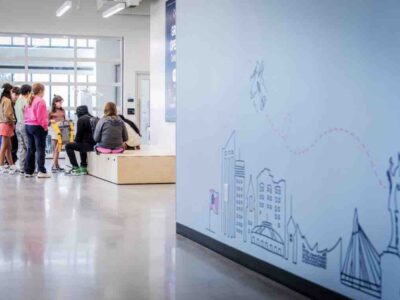The Netherlands is one of the most densely populated countries in Europe. The estimated Dutch population is more than 18 million, which accounts for approximately 0.22% of the total number of people on the planet.
Amsterdam is the country’s capital and most populous city, holding roughly 950,000 residents. Home to more bikes than residents (by a few hundred thousand, no less), Amsterdam has more canals than Venice, more bridges than Paris, and the highest concentration of museums per square meter than any other city in the world.
The northwestern European nation has strong ties to the color orange, as evidenced by its status as the official color of the Dutch royal family and national football team. However, what’s lesser known is the country’s history of rather innovative creations, ranging from the invention of company stock shares to being instrumental in the widespread use of orange carrots (seriously). Recently, it has been forced to tap back into its innovative roots.
Photo Courtesy crash71100
That’s because the Netherlands, like much of the world, is in the midst of a modern-day housing shortage and has developed an extremely unorthodox plan to solve it. Facing a goal to add 1 million housing units in the country by 2030, the PBL, the Netherlands’ Environmental Assessment Agency, developed the Straatje Erbij strategy. The Dutch concept best translates as “One Extra Street,” and the name is quite literal. According to Fast Company, the PBL wants to plan and build an extra block or street at the edges of 2,100 separate villages and cities.
The agency believes that the extra street approach could bring 95,000 new homes to the Netherlands, and that’s without accounting for more traditional urban planning measures to address overcrowding. The novel idea might seem underwhelming, but it offers a wealth of possibilities for the future of urban management.
The task of building homes is something that, given enough time and resources, many construction companies and builders could accomplish. The plan’s genius revolves around the way it solves a more complicated problem with the housing shortage — easily merging into already-in-place infrastructure.
The biggest difficulty in adding 95,000 homes to a country isn’t building them. It’s connecting them to existing public transit, trash collection, mailing routes, power grids, and sewage lines without messing those current systems up.
The PBL performed a comprehensive analysis on a multitude of factors before finalizing its solution. It will address the majority of the 1 million household goal by the more traditional method of urban densification. However, the future potential uses for Straatje Erbij are quite promising.
Photo Courtesy crash71100
Similar to the United States, there’s a growing population decline in rural pockets across the Netherlands. In some instances, this can even lead to local school and business closings due to a lack of funding and support. The construction of one extra block in a city tends to have an insignificant overall impact. However, the same thing in a rural town suffering from decline could pay massive dividends for the well-being of its locals.
Likewise, all the 95,000 proposed homes under the PBL’s plan would be located within one kilometer of a public transit stop, alleviating potential concerns over travel and commuting to work.
The One Extra Street policy must still undergo a series of approvals and modifications before it’s officially implemented, including addressing impacts on housing costs. However, the promising idea could see mass adoption in other countries facing similar challenges. And, just like Straatje Erbij, it starts as one but becomes many.





